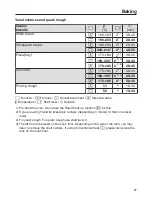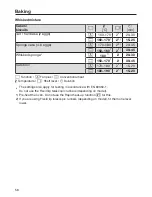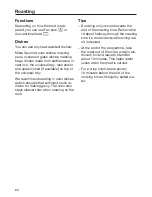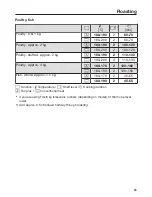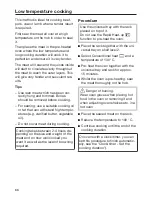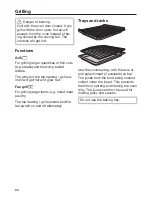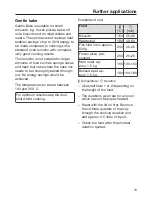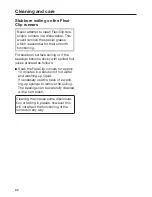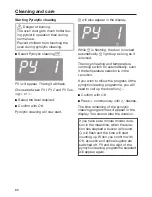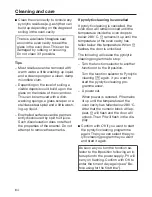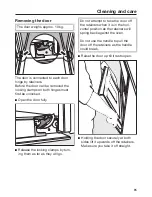
Grilling
70
Notes on the grilling chart
The data for the recommended function
is printed in bold.
Check the food after the shortest dura-
tion quoted.
Take note of the temperature range, the
shelf levels and the durations. These
take the size of the meat and cooking
practices into account.
Temperature
As a general rule, select the lower tem-
perature given in the chart. If higher
temperatures are used, the meat will
brown on the outside, but will not be
properly cooked through.
Pre-heating
Pre-heating is essential for grilling. Al-
ways pre-heat the top heat/grill element
for approx. 5 minutes with the door
closed.
Shelf level
Select the shelf level according to the
thickness of the food.
– Thin cuts: shelf level 4 or 5
– Thick cuts: shelf level 2 or 3
Grilling duration
– Thin pieces of fish and meat usually
take 6–8 minutes per side.
Thicker pieces require more time for
each side. It is best to grill food of a
similar thickness at the same time so
that the grilling time for each item
does not vary too greatly.
– Turn the food halfway through grilling.
Testing to see if cooked
One way of finding out how well a piece
of meat has been cooked is to press
down on it with a spoon:
Rare:
If the meat gives easily to
the pressure of the spoon,
it will still be red on the in-
side.
Medium:
If there is some resistance,
the inside will be pink.
Well-done: If there is very little resist-
ance, it is cooked through.
Check if the meat is cooked after the
shortest time quoted.
Tip:
If the surface of thicker cuts of
meat is cooked but the centre is not
cooked, continue grilling at a lower
temperature setting or use a lower shelf
level to allow the food to cook through
to the centre.


